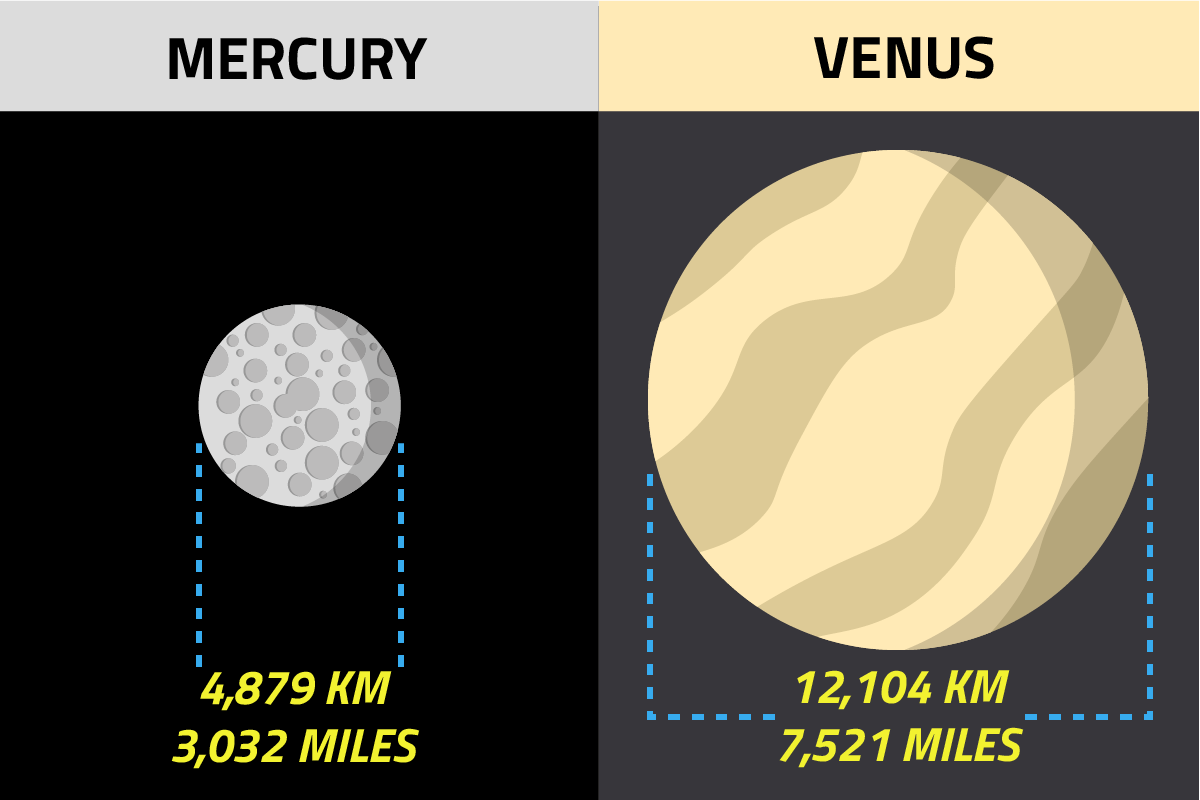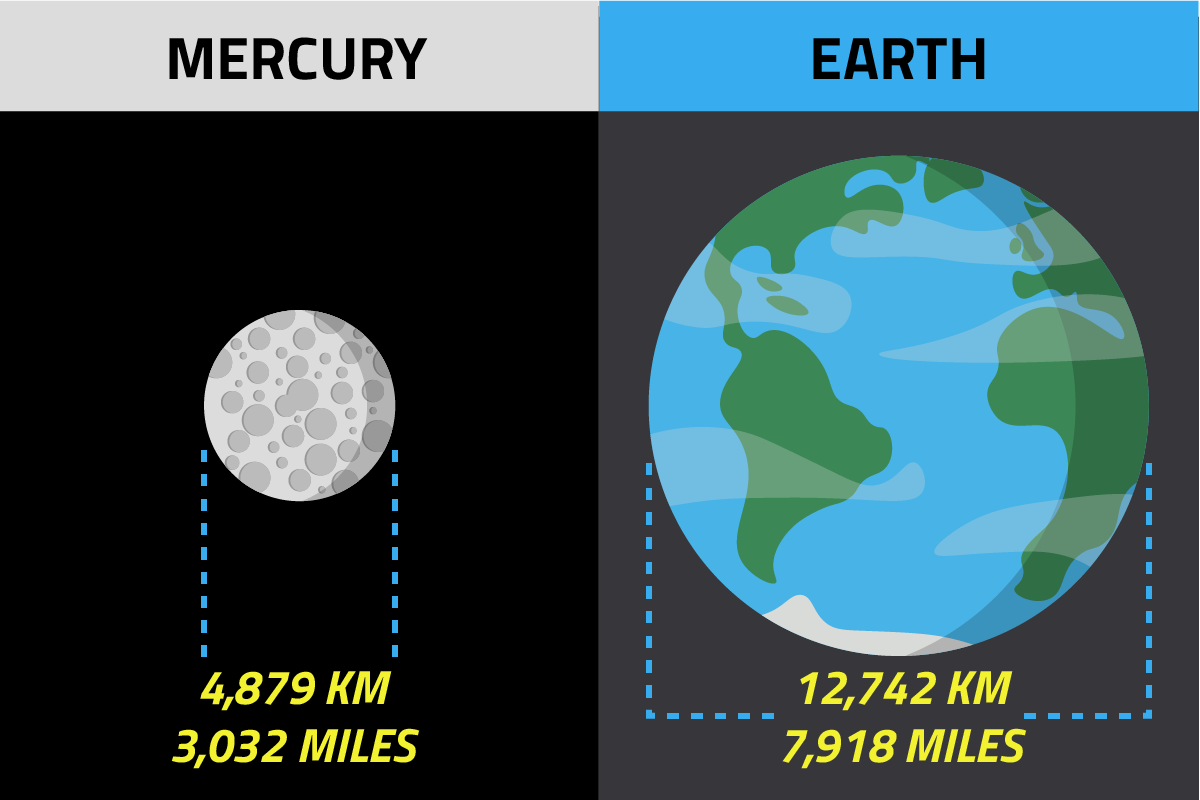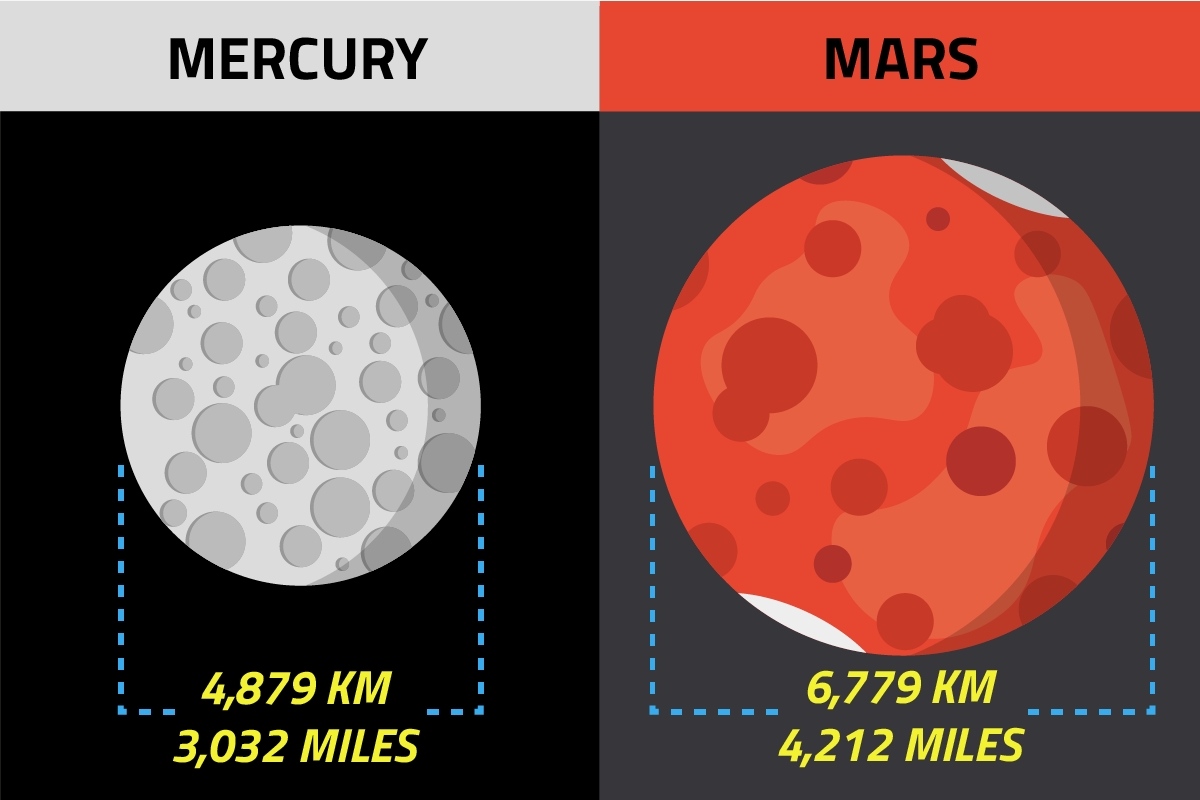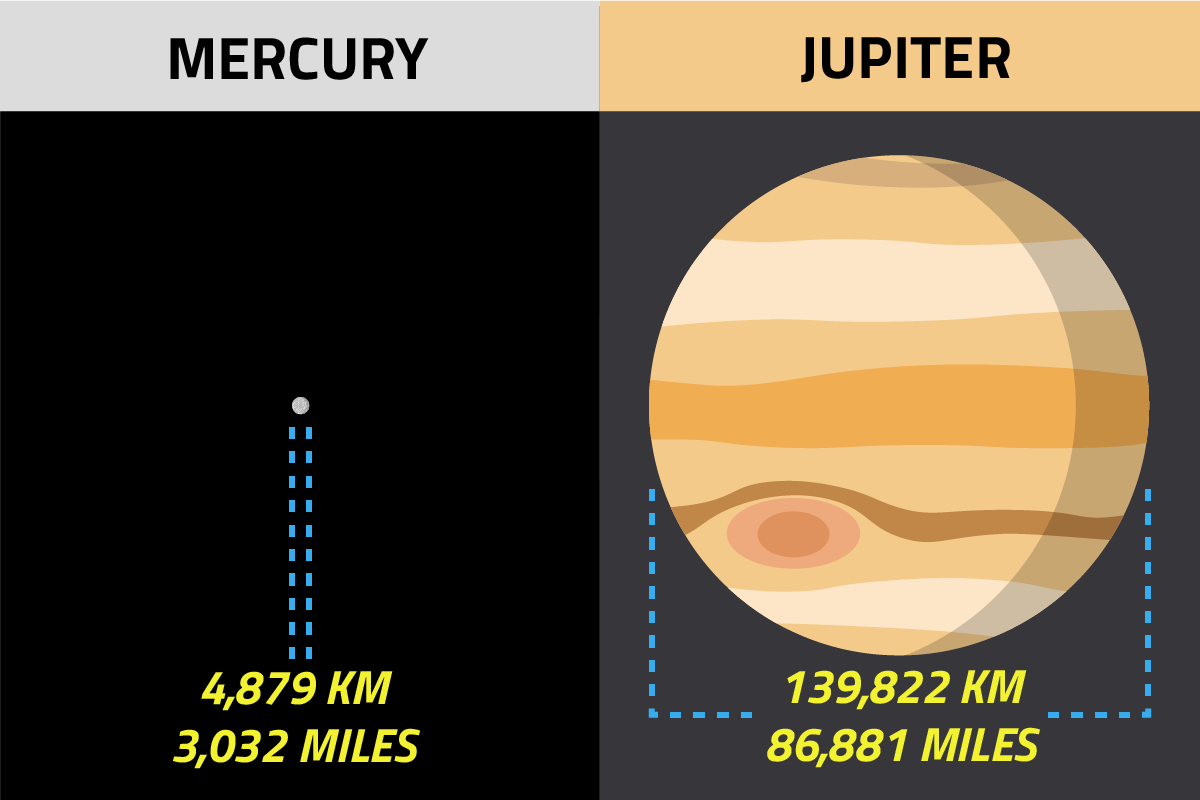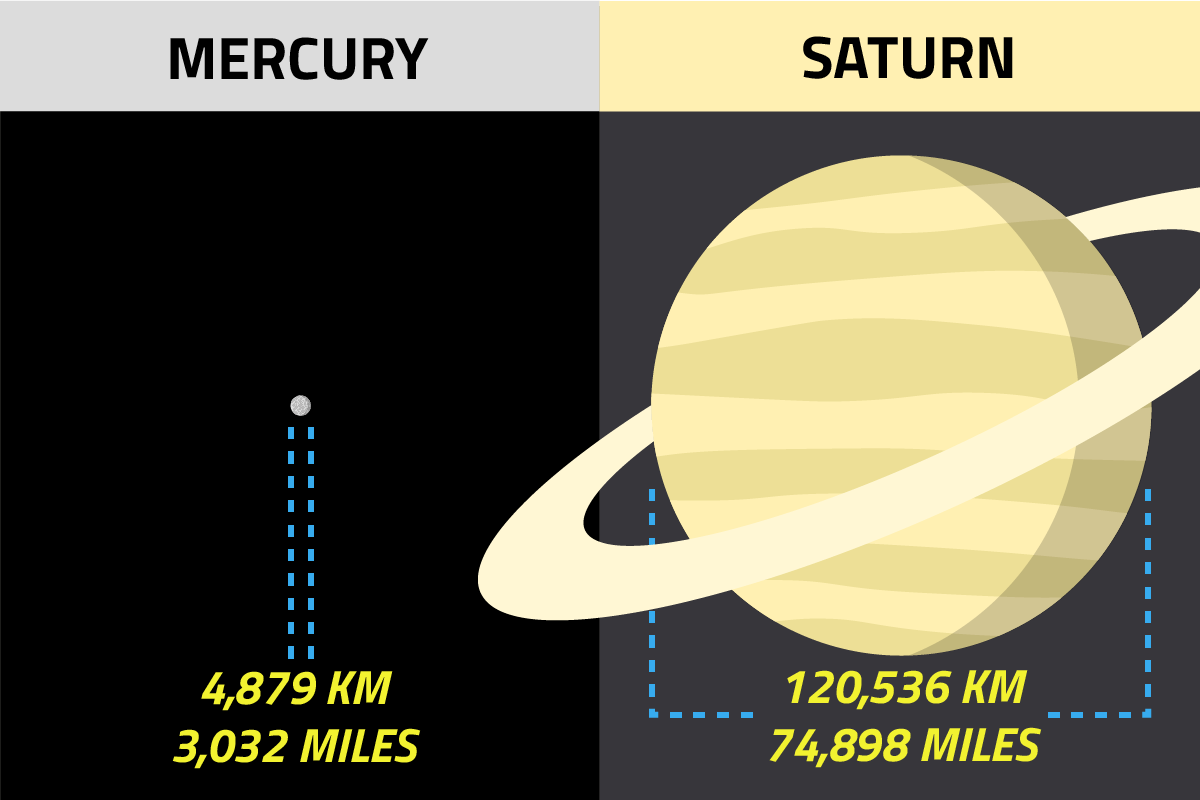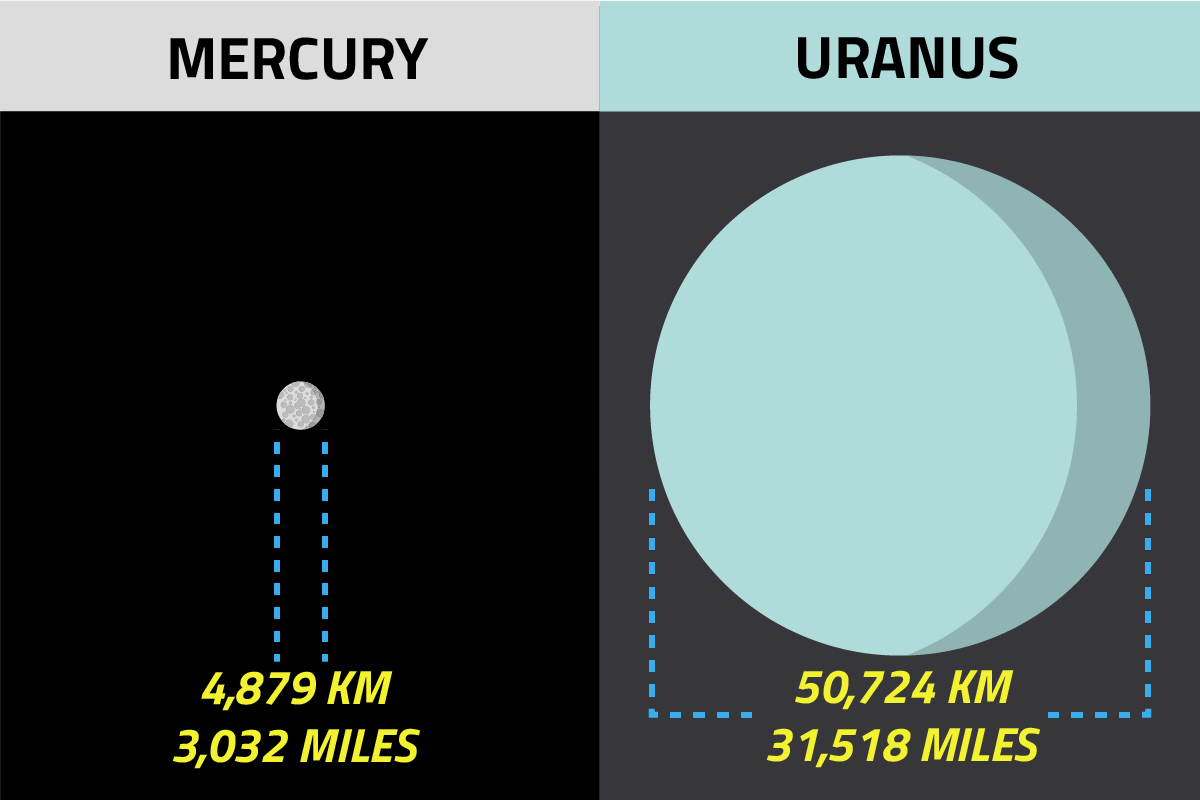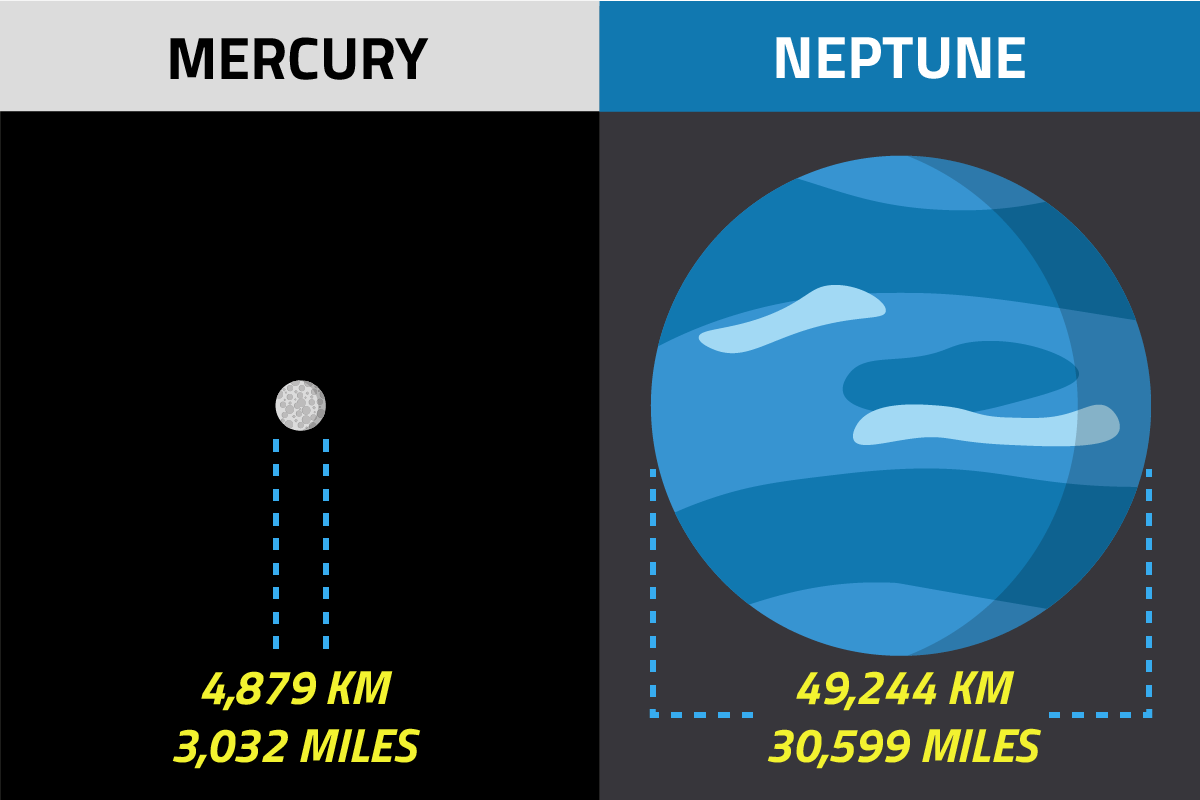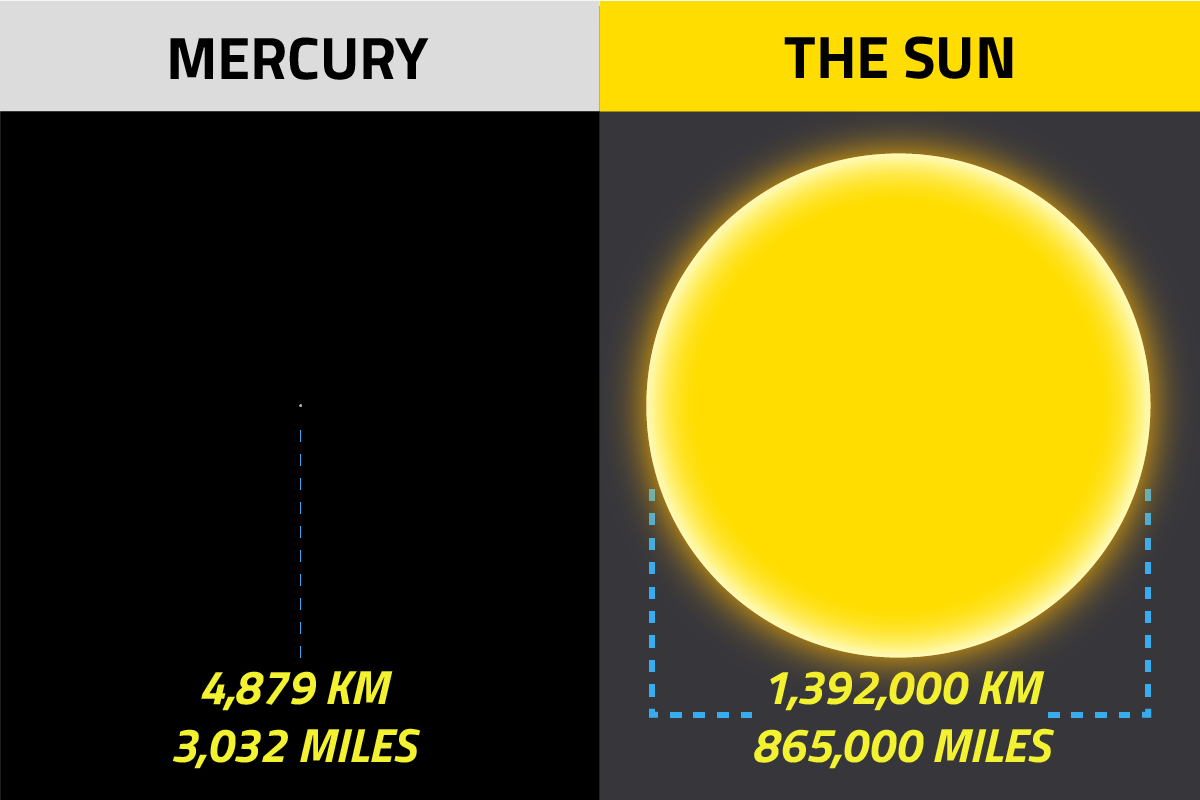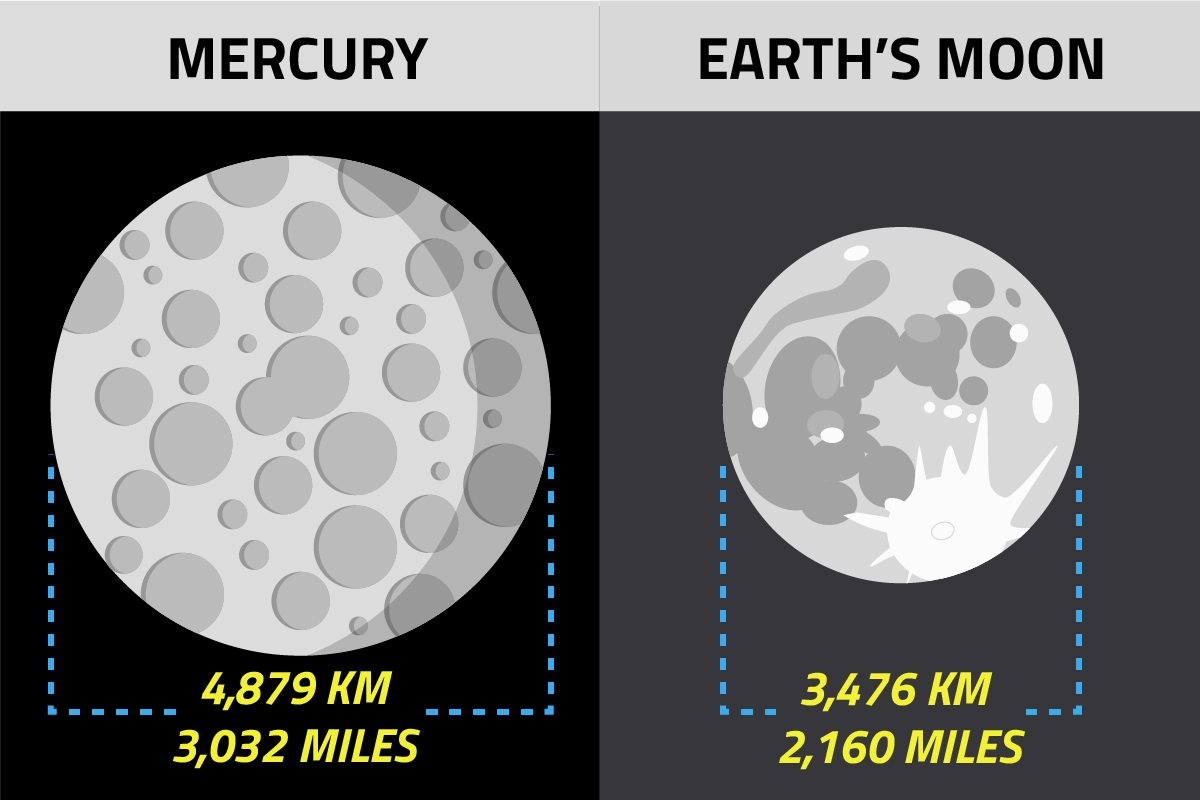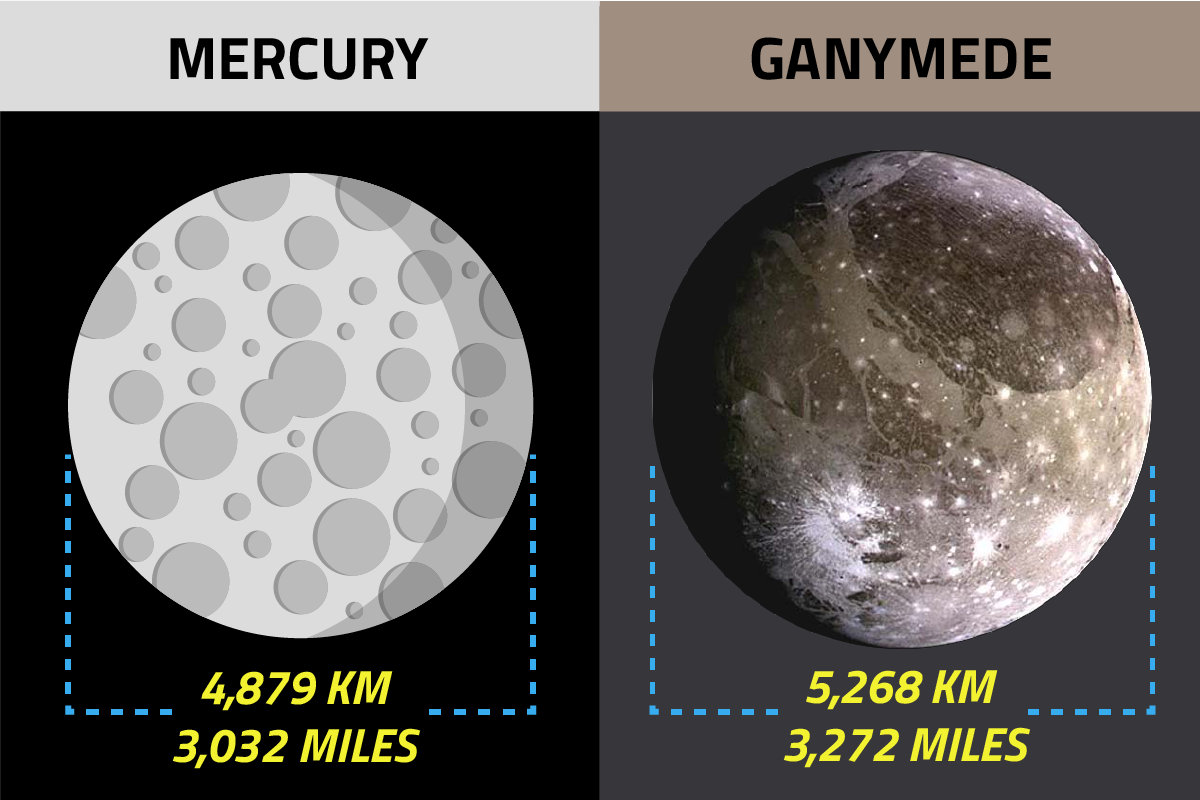Welcome to Mercury!
Mercury, named after the Roman messenger to the gods, is the closest planet to the Sun and the smallest traditional planet in the Solar System. It orbits the Sun in 88 days, meaning that for every year on Earth, four years have passed on Mercury. However, because it takes 59 days for Mercury spin once on its axis (one Mercurian day), it takes 176 days for the Sun to completely rise and set over the planet's horizon, compared with the 24 hours it takes for the same thing to happen on Earth. It is because of Mercury's speed across the face of the Sun that it is known as the "Messenger" planet. Its Greek equivalent is Hermes.
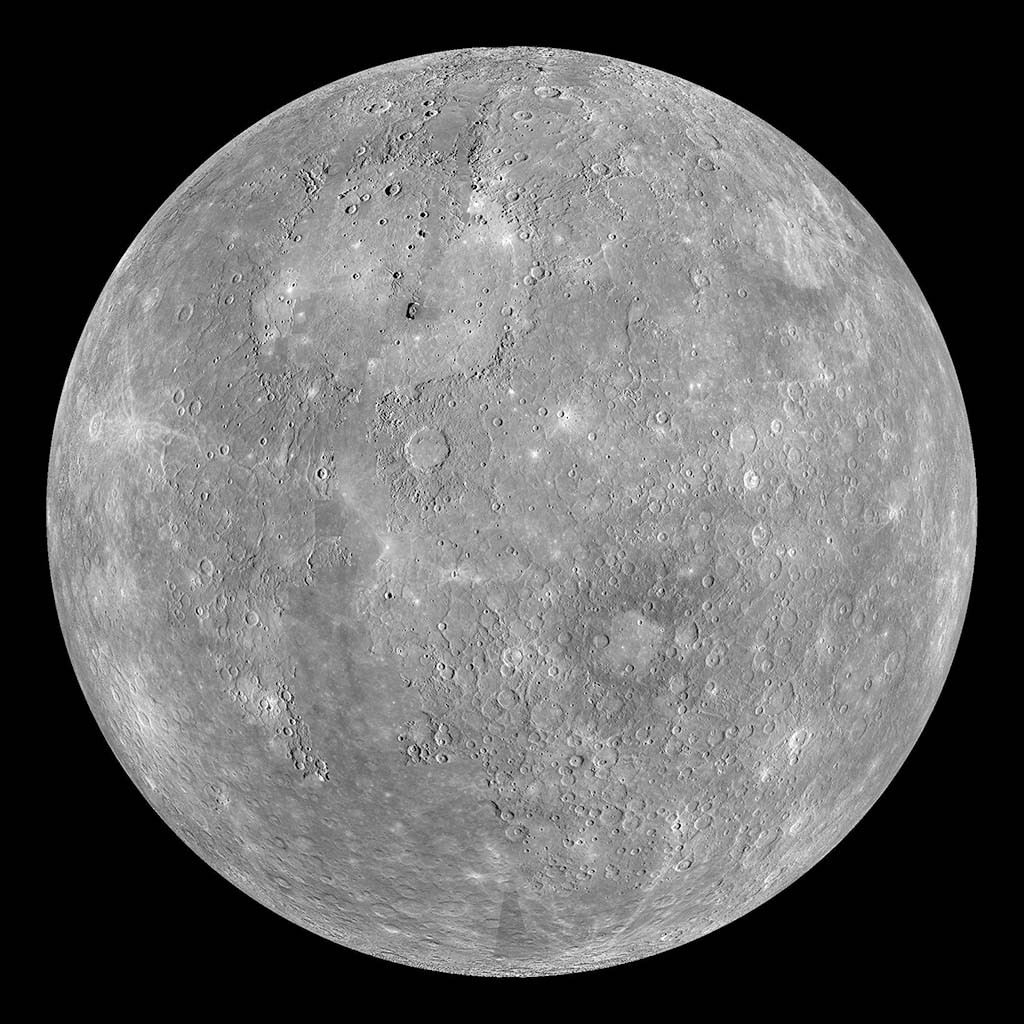 Mosaic of photos of Mercury taken by MESSENGER orbiter, courtesy of NASA/Johns Hopkins University Applied Physics Laboratory/Carnegie Institution of Washington
Mosaic of photos of Mercury taken by MESSENGER orbiter, courtesy of NASA/Johns Hopkins University Applied Physics Laboratory/Carnegie Institution of Washington
35,982,973 miles
0.39 A.U.
3,032 miles
Max: 430 °C / 800 °F
Mighty Mercury is the closest planet to the Sun, orbiting it at a distance of about 58 million kilometres (36 million miles). As it is so close, it only takes it 88 days to complete one journey around the Sun. Compare this to Neptune, the most distant planet in the solar system, which takes almost 165 days to get around.
No planet orbits in an exact circle. Instead, their orbits are all slightly squashed into a shape called an ellipse. They are said to have ellipitcal orbits. Mercury's orbit is the most squashed meaning that some parts of its orbit bring it as close as 46 million kilometres (28.5 million miles) from the Sun and as far away as 68 million kilometres (42 million miles).
The next planet after Mercury in the solar system is Venus. Although Venus is twice as far away from the Sun as Mercury is, Venus is actually a hotter planet!
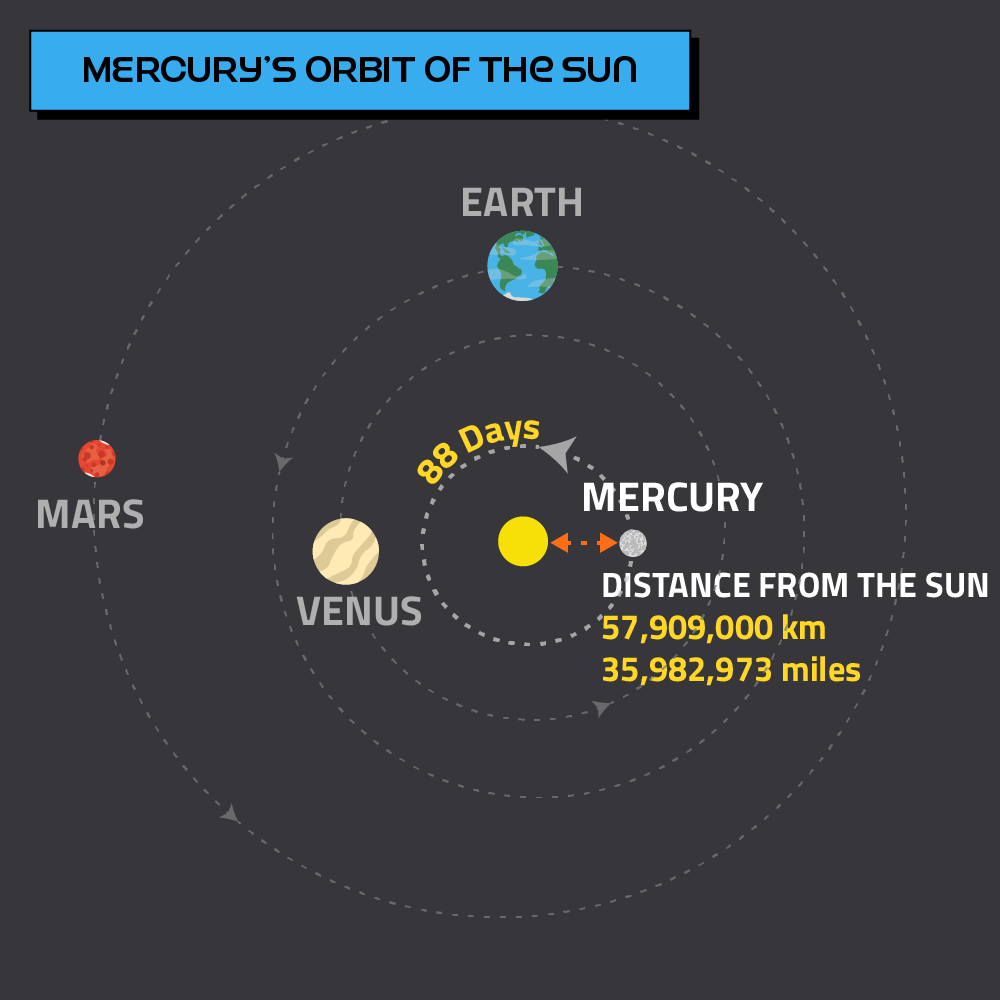
Mercury has a diameter of 4,879 kilometres (3,032 miles). This makes it the smallest planet in the solar system. It's only slightly wider than the USA, and not quite as wide as Canada or China.
Mercury is so small that there are even some moons larger than it. Ganymede, a moon of Jupiter, and Titan, a moon of Saturn, are both a little larger than Mercury.
As Mercury is closer to the Sun than Earth, it is sometimes possible to see it passing in front of the Sun's surface. This is called a transit. When they happen, it is clear to see that Mercury really is a tiny dot when compared with the gigantic Sun. They aren't very easy to see at all and require special equipment. Mercury's next transit of the Sun will be in 2032.
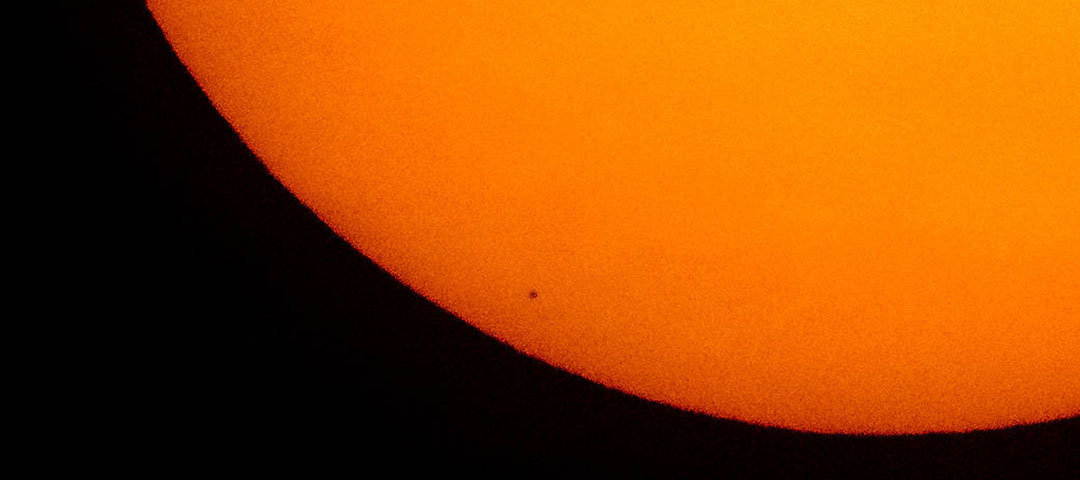 Silhouette of Mercury as it passes in front of the surface
of the Sun in November 2019. Image credit: NASA/Bill Ingails, edited from the original.
Silhouette of Mercury as it passes in front of the surface
of the Sun in November 2019. Image credit: NASA/Bill Ingails, edited from the original.Each of the inner planets have similar internal structures. At the centre of each of them is a core, the hottest part of the planet. The core is sometimes split into two - a solid inner core which is surounded by a liquid outer core. Surrounding the core is a mantle, an area made up of rocks and metals. Above all of that is the crust, the outer shell or surface of a planet.
What makes Mercury unique is the size of its core compared with the overall size of the planet. About 85% of the inside of Mercury is made up of its core. Compare this to Earth where the core only makes up about 15% of its volume. Earth is a larger planet than Mercury, but their inner cores are a fairly similar size. This suggests that Mercury may once have been on course to be larger than it but didn't quite get there.
Churning around Mercury's solid inner core is its liquid metallic outer core. The presence of this gives Mercury a magnetic field.
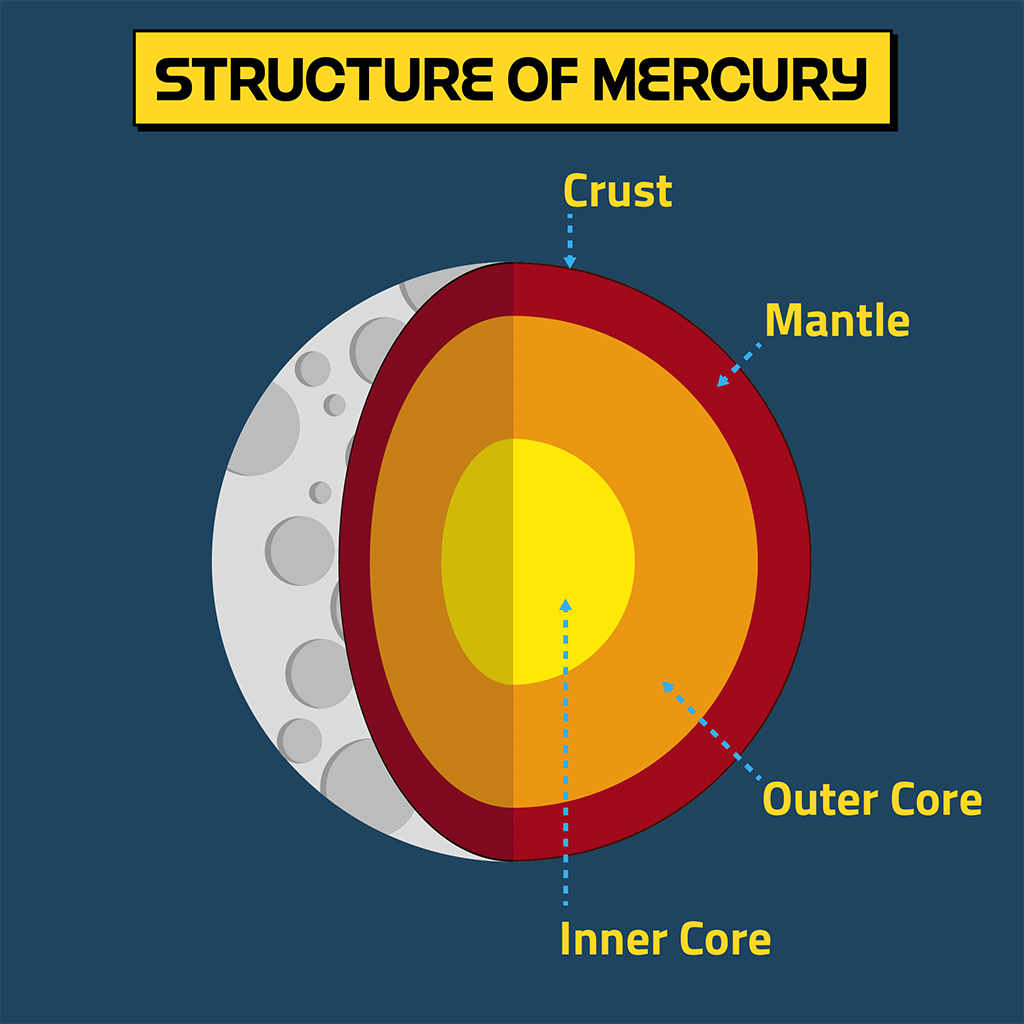
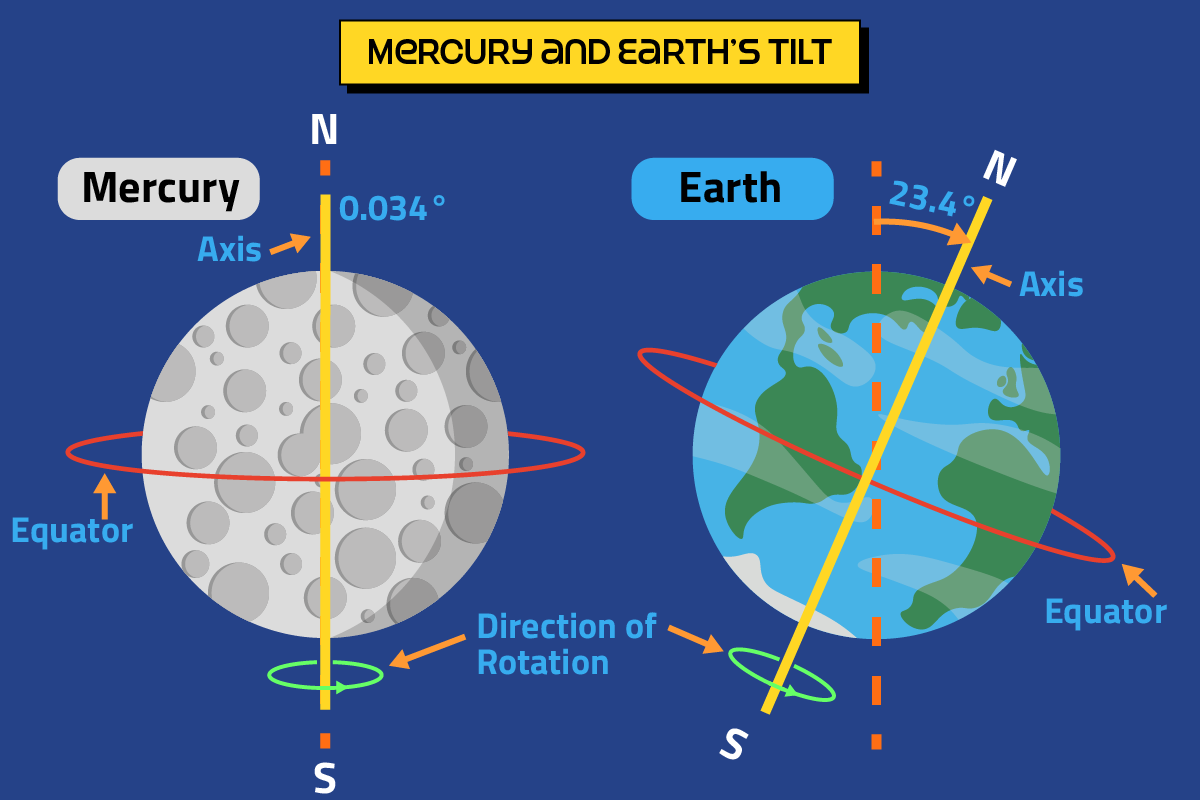
Each planet in the solar system rotates around an imaginary line running through it called an axis. For most planets, their axis is tilted, meaning that they don't appear to stand up straight. Instead, they lean a little. Or sometimes they lean a lot. Uranus, for example, is tilted so much that it appears to have fallen over!
Mercury is unique because it is hardly tilted at all. It is the only planet to stand up straight. As it isn't tilted, it doesn't have seasons. Instead, the side of Mercury facing the Sun is scorched by its heat while the side facing away from it freezes. Mercury's lack of tilt also has a surprising consequence. It allows water to exist on the planet. Although it's the closest planet to the Sun and temperatures on its sunlit side reach a very toasty 430 °C (800 °F), hidden in some of its craters in its north and south poles are substantial quantities of water ice. How the water got there, nobody really knows, but the reason it doesn't get boiled away by the Sun is because those parts of Mercury never lean towards it. Heat and light from the Sun cannot reach the depths of those craters, so the water existing at the bottom of remains there. Quite possibly, it's been there for millions of years. Useful to know if you're ever passing Mercury and need a drink.






